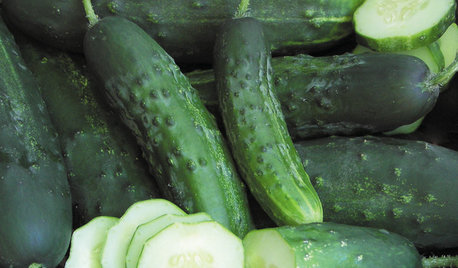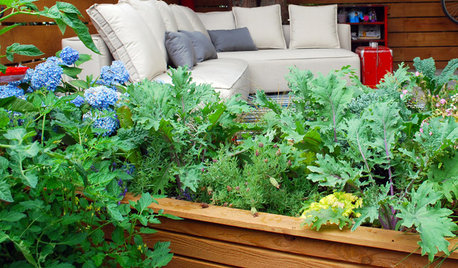Cucumber Beetle Solutions?
jimster
14 years ago
Related Stories

SUMMER FRUITS AND VEGETABLESSummer Crops: How to Grow Cucumbers
Pick a peck for pickles or opt for fewer and raw — no matter how you slice them, cucumbers are great for summer gardens small to large
Full Story
REMODELING GUIDESWake Up Rooms With the Power of Fresh Air
Even the trendiest interior designs can feel stale when your home is in permanent lockdown. Look to windows and doors for the solution
Full Story
EDIBLE GARDENSGarden BFFs? Why Your Vegetables Are Begging for Companion Plants
Foster friendships among plants for protection from pests, pollination support and color camaraderie
Full Story
GARDENING GUIDES6 Plants That Beat Butterfly Bush for the Wildlife Draw
It's invasive, a nonnative and a poor insect magnet. Check out these better alternatives to butterfly bush in the garden
Full Story
GARDENING GUIDESStep Right Outside for Fresh Herbs and Vegetables
Decks and patios can be convenient spots for edibles, and sometimes they even offer advantages over backyard gardens
Full Story
GARDENING GUIDESTree Care: Common Tree Diseases and What to Do About Them
Learn to recognize trees that may be affected by diseases or pests so you can quickly take action
Full Story
GARDENING AND LANDSCAPINGUnexpected Edible Gardens
How to grow your own herbs and vegetables almost anywhere
Full Story
LANDSCAPE DESIGN12 Ways to Make the Most of Your Yard
See how to get more out of every square inch of your outdoor space
Full Story
GARDENING GUIDESGarden Myths to Debunk as You Dig This Fall and Rest Over Winter
Termites hate wood mulch, don’t amend soil for trees, avoid gravel in planters — and more nuggets of garden wisdom
Full Story
GREEN DECORATINGBamboo Products — Earth Friend or Foe?
The ecofriendliness of this grass for flooring, wall coverings and furniture isn't cut and dried. Get the facts here
Full Story





jtm_in_pa
wayne_5 zone 6a Central Indiana
Related Professionals
Beachwood Landscape Architects & Landscape Designers · Franconia Landscape Architects & Landscape Designers · Milwaukee Landscape Architects & Landscape Designers · Tomball Landscape Architects & Landscape Designers · Goodyear Landscape Contractors · Blue Springs Landscape Contractors · Brookline Landscape Contractors · Gallatin Landscape Contractors · North Chicago Landscape Contractors · Parker Landscape Contractors · Plymouth Landscape Contractors · Weslaco Landscape Contractors · Westford Landscape Contractors · Sun Valley Landscape Contractors · Hawaiian Gardens Landscape Contractorsanney
jimsterOriginal Author
catherinet
anney
glib
jimsterOriginal Author
laceyvail 6A, WV
anney
glib
marylandmojo
veggieholic
marylandmojo
laceyvail 6A, WV
drscottr
franktank232
glib
aubade
bluebirdie